HARVESTELLA - Nintendo Switch Review

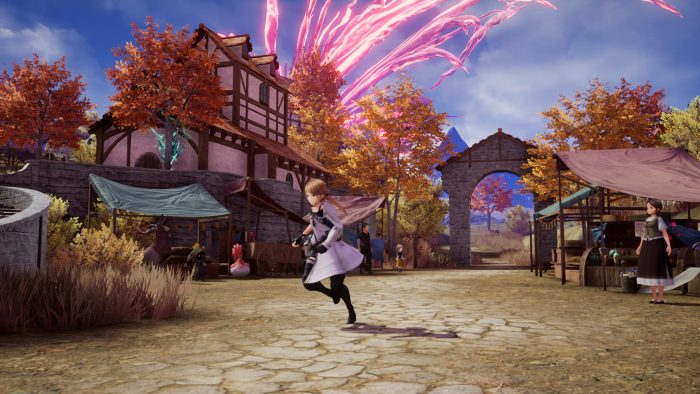
Game Info:
- System: Nintendo Switch, PC
- Publisher: Square Enix
- Developer: Live Wire
- Release Date: November 4, 2022
- Pricing:$59.99
- Rating: T
- Genre: Action RPG, Life Sim, Farming Sim
- Players: 1
- Official Website: https://harvestella.square-enix-games.com/en-us/
When we reviewed HARVESTELLA’s demo a few months ago, we were extremely impressed by the game, and quite hopeful for the final product. Although we found a lot to love in the retail release, the farming mechanics and delivery of the main story hold back the game’s true potential. Largely billed as an Action RPG (ARPG) with life sim elements, HARVESTELLA offers fun dungeon exploration and emotional bonds that reward your effort but stumbles with a clunky main story that skews in a perplexing sci-fi direction. Join us today on Honey’s Anime as we review HARVESTELLA on Nintendo Switch!
Fresh from the Farm
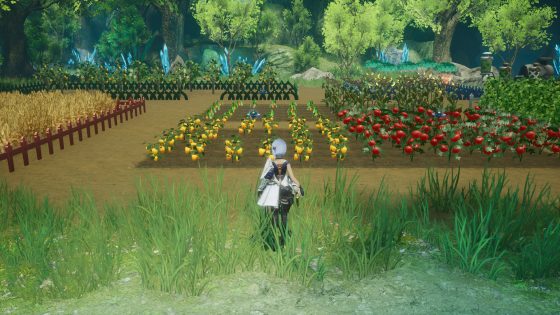
Developed by Live Wire—one of the developers behind the truly fantastic Ender Lilies: Quietus of the Knights—and published by Square Enix, HARVESTELLA is an ambitious new rival to established franchises like Rune Factory and Story of Seasons (formerly known as Harvest Moon). Boasting a distinctly Final Fantasy-inspired job system for its combat, and some gorgeous visuals powered by Unreal Engine, HARVESTELLA certainly brings a breath of fresh air into the life sim genre. Compared to the rustic (but charming) pixels of Stardew Valley, or the disastrous performance issues of Rune Factory 5, our first impression of HARVESTELLA was quite positive—and remains so even after 40+ hours with the game. Taking control of your amnesiac main character, you’ll quickly be given a house and a small farm, before meeting the residents of Lethe, your new hometown. The world of HARVESTELLA has its seasons controlled by the Seaslight—enormous glowing crystals that alter the geography and climate around their respective towns. As the plot unfolds, you’ll meet Aria—a young girl who arrives in a meteor crash, seemingly having traveled from the distant future.
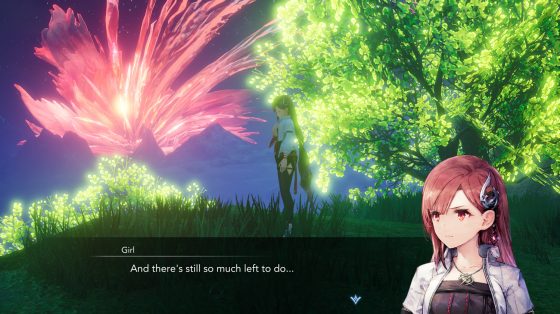
Together with Aria and a growing cast of side characters, you’ll work to unravel the truth behind Aria’s presence in this timeline and the mysterious “fifth season” known as “Quietus.” A nod to Live Wire’s previous game aside, Quietus is the “season of death” in HARVESTELLA, and occurs between each normal season, killing crops and severely injuring anyone who dares go outside. Solving the problem of Quietus involves traveling through dungeons, reaching new towns, and solving the crisis unfolding around each Seaslight. In your downtime, you’ll be fighting monsters, fishing, cooking, crafting, and—of course—tending to your farm. There’s a lot to talk about in HARVESTELLA, so let’s discuss each of the parts separately to better understand how they work together (and how they sometimes don’t).
Strike the Earth!
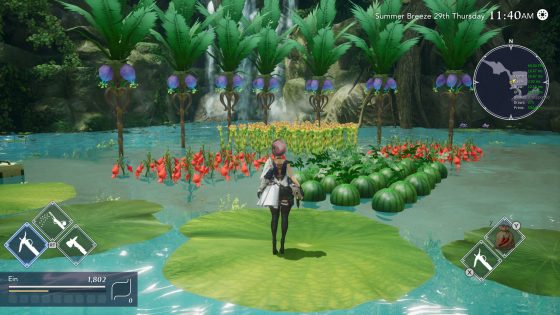
The farming gameplay is undoubtedly one of the biggest drawcards for HARVESTELLA, and unfortunately, one of its greatest weaknesses. As you’d expect of any farming sim, you’ll start with a simple plot of land, and gradually expand your farm throughout the game. Crops can be grown in different seasons, and require you to till the soil, plant seeds, water them, and harvest the crops. From there, you can sell your harvest via your ‘Shipping Box,’ with money trickling into your savings overnight. So far, so good. As you progress through the story, you’ll gather some fairy friends on the farm, each coming with a laundry list of tasks to complete—gathering a certain number of crops, crafting certain items, and so forth. As you tick off these tasks, you’ll get access to better farming equipment and abilities, like being able to till three squares of your farm at once, or breaking apart large rocks. With crafting recipes, you can produce machinery to process your raw ingredients, allowing you to turn wheat into flour or berries into juice. With a mixture of raw and processed ingredients, you can use your kitchen to create meals, which can then be sold to local townspeople or used in battle to increase your health and stamina.
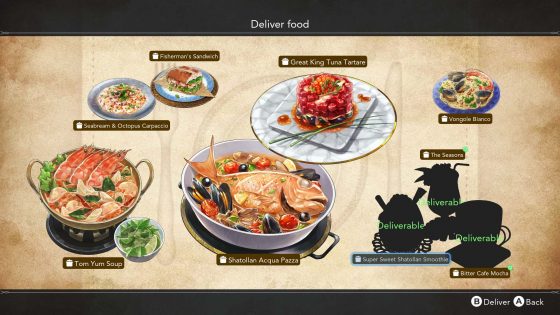
This all sounds fine—and essentially, that’s the problem. It’s all “just fine”—and more to the point, HARVESTELLA’s farming mechanics are strangely disconnected from the game itself. No side quest requires you to raise or deliver specific crops; the main story doesn’t care if you never craft a single item. As far as we can tell, once you’ve finished the game’s tutorial, you could never touch the farm again, and if you’re thrifty with items, you could beat the game’s story without ever planting another carrot. Obviously, the average player will want to interact with their farm, and we certainly spent a lot of time raising crops on the farm, and later, in separate areas such as “waterside” and “cave” biomes—but the game itself offers little incentive to actually farm. The profit margin on selling your harvest is woefully small, and you could easily make far more cash by completing side quests. Farming doesn’t yield seeds, requiring you to buy seeds from stores (or find them in dungeon chests), but the in-game economy isn’t balanced well enough to make this anywhere near profitable enough. Ultimately, although the farming aspect of HARVESTELLA is fun, it feels alienated from the rest of the game, like an opt-in mechanic rather than a cornerstone of the gameplay.
Brave by Default
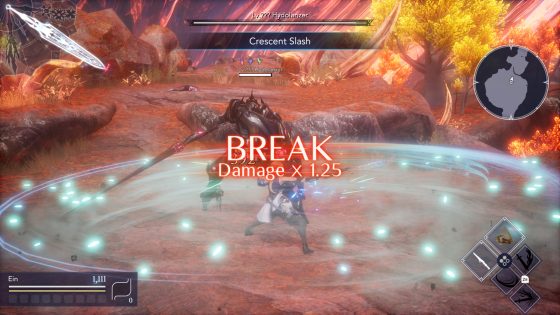
We turn to HARVESTELLA’s combat and exploration, which was by far our favorite part of the gameplay. As we mentioned earlier, you’ll have access to twelve different job classes, ranging from close-quarters swordplay to mages and sharpshooters. Every enemy has specific weapon-type and elemental-type weaknesses, so combat relies heavily on having the right party composition and choosing the best class to exploit weaknesses. During battle, you can chug drinks or shovel down some food, healing your party and boosting your stats. Eating food replenishes your ‘fullness’ gauge (shaped like a little stomach), which in turn will refill your stamina bar. Stamina is consumed by dashing and using weapon skills, so balancing your stamina, fullness, and health is crucial to surviving battles. Dungeon exploration is similar to dungeon RPGs like Etrian Odyssey or Mary Skelter, except with 3D graphics and non-random encounters. Each dungeon has a maze-like structure, requiring you to unlock or build shortcuts to earlier areas, and sometimes interact with unique dungeon elements to progress. Each of these dungeons features high-level monsters appropriately named “FEAR.” Challenging a FEAR early in the game will earn you a pointless death, but as you level up, you’ll be able to return to these dungeons and take on the FEAR. Defeating these high-level enemies will reward you with rare equipment or a hidden chest, along with a heap of extra EXP and Job Points (JP).
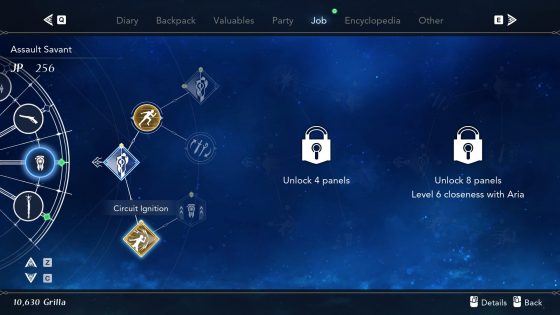
The JP system is a familiar addition from various other Square Enix games, and indeed, JRPGs in general. Each of your twelve Jobs has its own branching skill panel, with some panels locked behind the story or side character progress. Fully unlocking even one Job is quite the task and requires serious dedication. Considering you’ll be frequently switching between three different equipped Jobs, it’s best to focus on your party composition and playstyle to ensure JP are accumulating in useful Jobs. Your AI-controlled party members are pretty useful in battle and rarely make many mistakes, although you can’t change their equipment or give them specific commands. As you progress through their character stories, they’ll gain individual and party bonuses, so it’s well worth the time to bond with characters you like and unlock their full potential. HARVESTELLA’s dungeon exploration and combat are quite enjoyable and tie nicely into the story elements—our next topic of discussion.
Ender Farm: Quietus of the Harvest
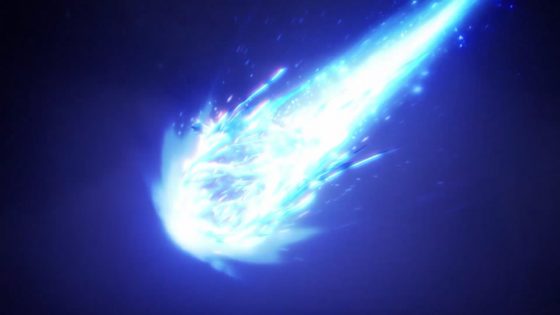
Disappointingly, HARVESTELLA’s main story feels like the awkward collision of a high-brow sci-fi plot slamming into an emotional character drama. The result is a sad, confused mush; a poor man’s imitation of Xenoblade Chronicles awkwardly bolted onto a supposed farming game. The main story is sensible and largely enjoyable until Chapter 4, where the game takes a strange dive into a complex sci-fi tale that left us perplexed rather than impressed. Despite early hints in this sci-fi direction, the back half of the game’s plot increasingly drives a divide between the “life sim” elements and the high-brow nature of the overarching story. It’s with this huge caveat—and a strange sense of irony—that we applaud HARVESTELLA’s side stories and character arcs. Side quests are emotionally impactful and usually connected in small groups of multiple quests, letting you know these NPCs in greater detail. From a group of kids struggling to deal with a friend moving away, to a woman whose fiancee has forgotten her very existence, the side quests always felt grounded and rewarding.

The character side stories are equally entertaining, letting you into the private lives of your companions as they struggle with huge, emotional, burdens. One storyline follows a party member who’s now the very last of her species; another has you dealing with the ramifications of a church falling apart. Split into ten different episodes per character, seeing all of your party’s stories occupies a large chunk of time, and was a standout part of HARVESTELLA for us. For anyone wondering: yes, HARVESTELLA does have romance options available post-game, and every romanceable character is available regardless of your chosen gender (male, female, or non-binary). The game developers refer to this in interviews as “choosing a life partner” rather than “marriage”, and it’s a nice way to tie off your epic narrative of saving the world—plus a reward for investing in a character’s story. We absolutely adored the side quest design in HARVESTELLA, but the main story’s confusing “twists” and direction were a drab letdown to some otherwise fine writing.
This Is (Not) What Peak Performance Looks Like
As we mentioned earlier in the article, HARVESTELLA is a visually stunning game, with pretty character models and some beautiful vistas. Unfortunately, we did run into a fair number of visual glitches, and frequent performance drops when farming. Notably, using the waterside biome tanked our performance (both docked and undocked), although the dungeons and combat remained consistently performant in either mode. We also encountered a few visual glitches when switching from handheld to docked—but nothing restarting the game couldn’t fix, thankfully. When undocked, the game drops the resolution significantly, but otherwise, it’s a perfectly fine way to play the game—that said, we definitely preferred keeping the game docked to admire those pretty backgrounds.
Final Thoughts
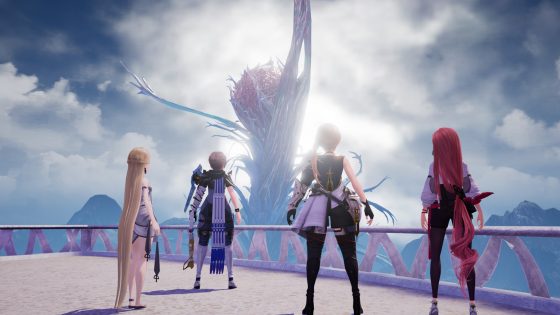
HARVESTELLA is a difficult type of game to review, chiefly because it feels rather like three different games duct-taped together, each doing a fine job alone but struggling to work in concert. Despite our hopes, HARVESTELLA doesn’t offer a significant challenge to existing farming titles such as Stardew Valley or even Sakuna: Of Rice and Ruin—in reality, you could easily remove the farming mechanic from HARVESTELLA and barely notice a change. That said, as an action RPG with brilliant side stories and entertaining dungeon exploration, HARVESTELLA earns a solid recommendation—just ready yourself for a perplexing main story that leans more into sci-fi than you might expect. What do you think about HARVESTELLA? Are you playing the game? Let us know your thoughts in the comments below, and as always, thanks for reading!
[recommendedPost post_id='354598' url='' title='' img='' class='' widget_title='']

No comments